2006 had seen a number of international events for Emha and Kiai Kanjeng; a year that was punctuated by a number of disasters in Indonesia. These included the May 27th earthquake in Yogyakarta, a further earthquake on Java’s southern coast and the vast outpouring of mud resulting from a drilling exploration rig in East Java. Emha and Kiai Kanjeng would be involved, directly or indirectly with relief efforts for people affected by these disasters.
On June 21st the Nahdlatul Ulama mass Muslim organisation were due to hold a major international conference at Jakarta’s Borobudur Hotel, the venue for the post-tsunami concert at which Yusuf Islam played with Kiai Kanjeng almost eighteen months before. There were delegates from Muslim countries and all over the world, representing the full spectrum of Islamic cultures. I was to be the English language MC for the event, and Emha's elder brother, Cak Fuad, was to be the Arabic language MC. We had all met that morning to plan the set list in detail. The songs were plotted out and I had drafted a commentary in English that we could use, song by song. We sat and had coffee while ironing out the fine points. Following is the commentary that was used on that occasion. It provides a brief description of some of the songs that might be played in a typical Kiai Kanjeng performance, and the background to them.
Intro - Music Iftihah…
My name is Ian L. Betts and I’m a member of the Kiai Kanjeng community. I help Kiai Kanjeng by making their work more accessible by a wider international audience. Kiai Kanjeng are a gamelan orchestra formed over 20 years ago and led by Novi Budianto. The gamelan is the traditional instrument of Java. Kiai Kanjeng specialise in music particular to Indonesia, often giving traditional songs modern and dynamic treatments, in a fusion style. They are often described as ambassadors of cultural diplomacy and gamelan dakwah. Kiai Kanjeng use all the cultural tools at their disposal to pursue their own form of gamelan dakwah with a characteristic Indonesian sound. This song, Kanjeng Rasul, is based on the life and stories of the Prophet Muhammad, who is revered in shalawat, or songs in praise of the Prophet. This is a traditional song, popular in Indonesia’s madrassh or pesantren schools. Kiai Kanjeng have taken this Javanese shalawat and rearranged it in a modern way, accompanied by traditional instruments. Ladies and gentlemen, Kanjeng Rasul…
The next song is a shalawat made popular by Imam Busyiri of Alexandria. It concerns love for Allah, the wish and hope for his blessings by those who truly fear him, who seek his softness in the face of unpredictable nature and suffering. However, the sufferings of man are as nothing, mere drops compared to the oceans of love conveyed to man by Allah and his blessings. Ladies and gentlemen, An Nabi Shollu Alaih
The next song is an example of the socialisation of the appreciation of santri or madrassah students for the Prophet Muhammad, conveyed in Arabic. It concerns the love for Allah and the Prophet. This song featured very successfully during performances of Kiai Kanjeng on their 25 city tour of the UK and Europe in early 2005, during which Emha Ainun Nadjib was awarded the Islamic Award of Excellence by the Muslim News in London. On the tour they also played at performances to honour Pope John Paul II who had recently passed away in Italy. Ladies and gentlemen, Ayyu Harrojun, Nurul Mustafa…
This song, Gundul Pacul, deals with largely social themes in a typically Indonesian context. It’s a playful and ironic, satirical piece which warns national leaders to never ignore the realities of the lives of the poor. All Javanese people will be able to sing along to this song which refers to a young boy, asked to carry a basket of rice on his head, only to suffer a lapse in concentration, causing the basket to fall to the ground and the rice to be spoilt. Again, it was performed to great effect on the 25 city tour of the UK and Europe. The story of the tour can be found in the new book “Jalan Sunyi Emha” – The Silent Pilgrimage – Emha Ainun Nadjib and his lifelong journey of faith. Ladies and gentlemen, Gundul Pacul…
The next song is a musical exploration of the many cultures of the world, in this case focusing on Egypt and the legendary Ummi Kultsum. When Kiai Kanjeng toured Egypt in 2002 they performed a repertoire of Ummi Kultsum songs, delighting their host audiences in live and televised performances. The song takes as its central motif the triangle formed by the three mosques of Al Haram, Nabawi and Al Aqsa. The triangle is also a familiar symbol for Kiai Kanjeng, forming the symbol for the Kendui Cinta or Feast of Love gatherings in Jakarta, denoting the relationship between Allah, the Prophet Muhammad and man. Ladies and gentlemen, At Tulat Siyah Al Muqadatsah
This song, Engkau Menjelang, is a song rooted in Tasawuf, or Sufism. It deals with Sufi themes of disappointment with and withdrawal from the world and the spiritual journey back to Allah. It is about approaching Allah. Ladies and gentlemen, Engkau Menjelang
This song, Kalimah, is a further example of Kiai Kanjeng’s proficiency in cultural diplomacy. This is a well-known in the Middle East, popularised by Majdah Rumi, which has been rearranged by Kiai Kanjeng, though retaining the original lyrics. Ladies and gentlemen, Kalimah…
And now it is our very great pleasure to introduce our very special guest, who will perform a song with Kiai Kanjeng – a very special song featuring utterances in praise of Allah and the Prophet Muhammad which has been given a dynamic new treatment by Kiai Kanjeng. Ladies and gentlemen, may I introduce one of Indonesia’s foremost vocalists, Bertha, and Subhanallah…
Ladies and gentlemen, Idris Sardi needs no introduction in Indonesia, where his name is synonymous with the violin. He has been Indonesia’s leading violin maestro for decades, a man who can evoke truly beautiful sounds from his instrument in any manner of styles. Idris Sardi and Kiai Kanjeng will perform a shalawat focusing on the people of Madura, East Java, as well as a traditional Islamic song. Ladies and gentlemen, Idris Sardi with Shalawat Madura and La Tahzanu…
And now ladies and gentlemen we’d like to invite you to join us on a brief musical tour of shalawat throughout Indonesia and beyond. We’ll be visiting shalawat an ethnic round up of Indonesia, in Banyuwangi, East Java, in West Java’s Sunda, in Central Java and on to China. Ladies and gentlemen, Kenduri Shalawat – A Feast of Shalawat…
Ladies and gentlemen, this, the last song form Kiai Kanjeng this evening, is one that most truly represents the tradition of gamelan dakwah. Lir Ilir concerns a seemingly simply tale of a small boy in a rural setting asked to climb a belimbing or starfruit tree and to pick its fruit in the moonlight. The moon is a constant theme in Kiai Kanjng’s work, reflected in the name given to the monthly gatherings in East Java held at the full moon, padhang mbulan. We leave you with the sound of Lir Ilir, with its secret of a shalawat concealed within: Tombo Ati, a shalawat composed by the great Sunan Ampel, one of the nine saints of Islam who are credited with bringing Islam to Java centuries ago. Tombo Ati is a song of piety and reverence, listing five ways to ease the heart. Ladies and gentlemen, Kiai Kanjeng and I leave you with Lir Ilir and Tombo Ati.

































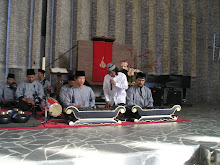
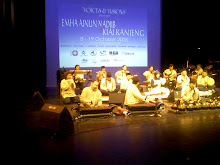

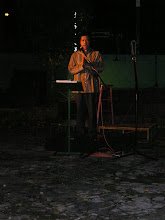



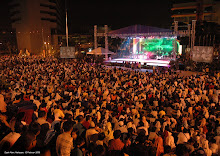
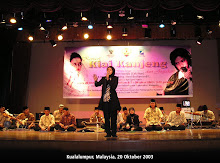
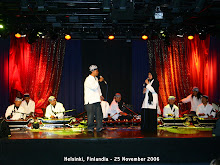.jpg)



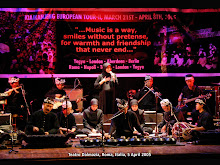


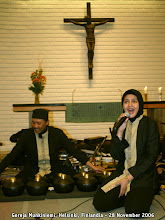.jpg)

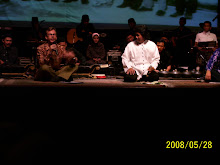.jpg)
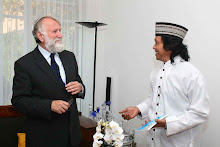
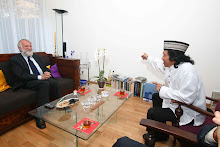
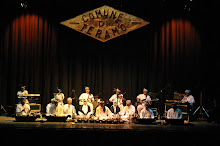


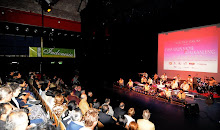

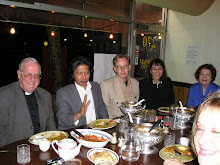


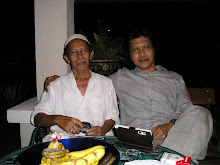
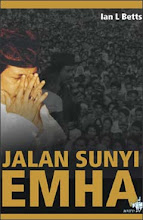
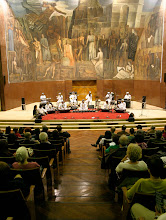
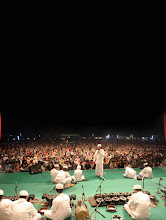

Hi Ian, can I have you personal email?
ReplyDelete